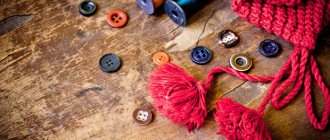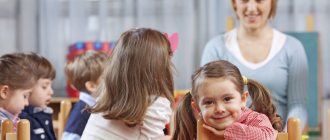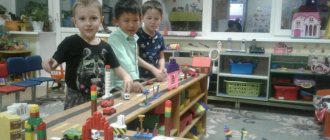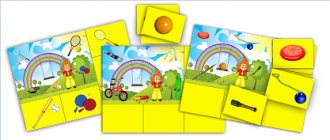The use of visual material when organizing experimental activities in preschool educational institutions
Within the framework of the designated topic, we are not talking about visual materials traditionally used in classes - posters, illustrations, cards with diagrams. Research activities are accompanied by a mandatory stage of work - documenting the information received. The teacher should draw the children's attention to the fact that scientists (researchers and inventors) write down their observations and conclusions that they come to in the process of studying any phenomena or properties of objects.
To record observations of preschoolers, the following forms can be used:
- Research cards. The children fill out special forms, which are then compiled into a file cabinet of observations and experiments.
- Personal diary of observations. This form offers more room for creativity and expression of individuality than cards. Children can be allowed to make notes, sketches, and diagrams in their diary.
- Stands. You can record children's experimentation by designing stands: hanging a plan for conducting experiments, diagrams and photographs with the results.
- Lapbooks are hand-made folding books on the topic of research carried out (“Water”, “Weather”, “Insects”, “Properties of Air”, etc.). Templates can be used to create such books. It will be great if parents help the children in designing lapbooks.
A laptop is a thematic folder containing a number of pockets, windows, and miniature nested books. It can accommodate a huge amount of material on the topic, presented in the form of cards, illustrations, diagrams, educational games, etc.
Photo gallery: visual materials for recording research activities in kindergarten
Research cards display observation results
The observation log displays the results of daily research
You can make a nature diary yourself or purchase it in a store.
Older preschoolers can keep individual observation diaries
The results of experiments can be recorded in special notebooks
The finished laptop can be studied for a long time and with interest.
Making a lapbook helps children explore an object comprehensively
Video: what is a lapbook
Ways to enhance the cognitive activity of preschool children
Modern Federal requirements for educational, educational, and developmental tasks in preschool education require special attention to the formation of initiative, independence, and cognitive activity in children.
It is the desire for independent development that is considered the main characteristic of the development of a preschooler. The baby should receive important information about the world around him, people, the laws of social life, natural objects, naturally. Cognitive and research activity in the senior group is expressed in purposefulness of thoughts and actions, concentration, desire to express one’s opinion, and compare the information received.
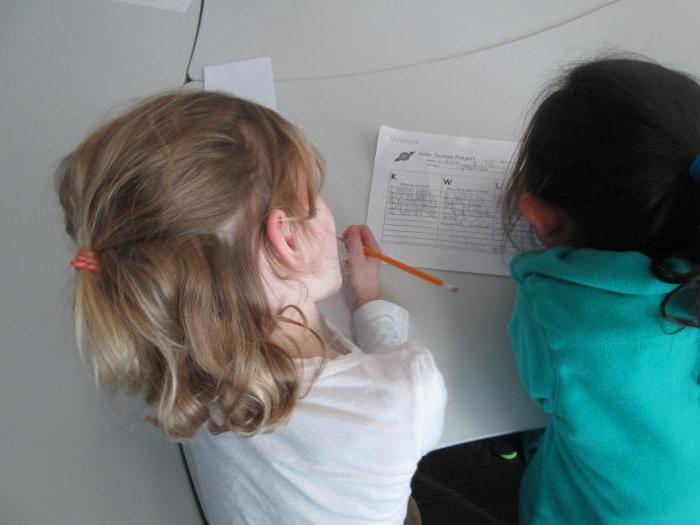
Perspective and thematic planning of experimental activities in the senior group
Municipal preschool educational institution
"Kindergarten No. 69"
EMR of the Saratov region
Perspective and thematic planning of experimental activities in the combined senior group
Educator: Karpova N.A.
Perspective and thematic planning of experimental activities
(Senior group)
| Month | Subject | Experiments |
| September | Goodbye summer, hello kindergarten | Card No. 1 “Recipes for soap bubble solution.” Goal: Teach children how to make soap solution |
| Card No. 2 “Funny Bubbles” Goal: To introduce children to the properties of soap bubbles | ||
| Harvest | Card No. 3 “Experience with light and potato germination” Goal: to identify the need of the plant - potato tuber in sunlight, to generalize ideas about the importance of favorable conditions for plant growth. | |
| World of plants | Card No. 4 “Can a plant breathe?” Goal: to identify the plant’s need for air and breathing; understand how the respiration process occurs in plants. | |
| October | Autumn colors | Card No. 5 “Making a cloud” goal: to show how clouds form and what rain is. |
| Animal world | Card No. 6 “Why do they say “water off a duck’s back?” Goal: to establish a connection between the structure and lifestyle of birds in the ecosystem. | |
| I am human | Card No. 7 “Wirling Time” Purpose: to introduce the structural features of the human ear | |
| Little explorers | Card No. 8 “Rainbow” Goal: to introduce rainbows as a natural phenomenon | |
| November | Friendship | Card No. 9 “Which is faster?” Purpose: to form an idea of atmospheric pressure. |
| My family | Card No. 10 “Where did the ink go?” Goal: to introduce children to the properties of activated carbon | |
| The science of politeness, etiquette | Card No. 11 “Plant water needs” Goal: to form children’s ideas about the importance of water for the life and growth of plants | |
| How does anyone prepare for winter? | Card No. 12 “There is air in the soil, there is air in the water” Goal: to consolidate the idea that there is air in soil and water. | |
| December | Hello winter winter | Card No. 13 “Why does snow warm?” Goal: to help children understand that snow warms the ground from freezing. |
| City of masters | Card No. 14 “Soap bubbles in the cold” Purpose: to introduce children to the properties of soap bubbles in winter | |
| New Year's kaleidoscope | Card No. 15 “Soap bubbles in the cold” Purpose: to introduce children to the properties of soap bubbles in winter | |
| Card No. 16 “Soap bubbles in the cold” Purpose: to introduce children to the properties of soap bubbles in winter | ||
| January | Folk culture and tradition, our way of life | Card No. 17 “The melting and freezing of water” Goal: to consolidate children's knowledge about the properties of water. |
| Card No. 18 “How a thermometer works” Purpose: to see how the thermometer works. | ||
| Card No. 19 “How to detect air” Goal: to determine whether air surrounds us and how to detect it. Determine the air flow in the room. | ||
| February | Kindness rules the world | Card No. 20 “Living Lumps” Goal: to determine how the first living cells were transformed. |
| Transport | Card number 21 “Candle in a jar” Goal: to reveal that during combustion the composition of the air changes (there is less oxygen) and that oxygen is needed for combustion. Learn how to extinguish fire. | |
| Our defenders | Card No. 22 “Parachute” Purpose: to reveal that air has elasticity. Understand how air power (motion) can be used. | |
| ABC of safety | Card No. 23 “Where will the first thawed patches be?” Goal: to establish a connection between seasonal changes and the onset of heat and the appearance of the sun. | |
| March | Women's Day | Card number 24 “Miracle - hairstyle” Purpose: to introduce the manifestation of static electricity and the possibility of removing it from objects. |
| Sorceress water | Card No. 25 “Aggregative states of water” Goal: to prove that the state of water depends on air temperature and is in three states: liquid - water; hard – snow, ice; gaseous - steam. | |
| Spring is sweeping the planet | Card No. 26 “Air does not move from a closed space” Goal: to prove that air cannot move from a closed space. | |
| Visiting a fairy tale | Card number 27 “air helps fish swim” Goal: explain how an air-filled swim bladder helps fish swim | |
| April | Meeting the birds | Card No. 28 “How birds’ feathers are arranged” Goal: to establish a connection between the structure and lifestyle of birds in the ecosystem. |
| We want to be healthy | Card No. 29 “Floating Orange” Goal: to prove that there is air in the orange peel | |
| My city, my country, my planet | Card No. 30 “Immersing objects in wet and dry sand” Purpose: to show that objects sink deeper into dry sand than into wet sand. | |
| Kindness rules the world | Card No. 31 “Jumping Rice Flakes” Purpose: to show that as a result of contact between two different objects, static electrical discharges can be separated. | |
| May | My city, my country, my planet | Card No. 32 “Method of separating mixed salt and pepper” Purpose: to show that as a result of contact, not all objects can separate static electrical discharges |
| Victory Day | Card number 33 “How a shadow is formed” Goal: to understand how a shadow is formed, its dependence on the light source and the object, and their mutual position. | |
| Natural world | Card No. 34 “What is the importance of seed size” Purpose: to show that the larger and thicker the seed, the better its germination. | |
| Goodbye kindergarten, hello school | Card No. 35 “Sand – natural filtrate” Purpose: to introduce the properties of sand |
Techniques for stimulating the self-development of preschool children
Cognitive and research activities in the senior group are stimulated by a variety of pedagogical techniques. First of all, the teacher tries, through imagery, motivation, and emotionality, to ensure that his students are interested in the task assigned to them. A wise mentor pretends that he himself does not know the answer to this question, and only the child can help him with this, and so joint cognitive and research activities begin. The average kindergarten group according to the Federal State Educational Standard also involves various types of projects and research conducted under the direct supervision of the teacher. Gradually, the teacher fades into the background, giving children the opportunity to independently obtain the results of the experiment and experience. To stimulate preschoolers as they work, the teacher asks them questions: “How do you think your experiment will end?”, “What new things have you learned at this stage of work?”
Gradually, the teacher becomes a tutor, he clarifies the algorithm of the child’s actions, helps him make diagrams and drawings. Cognitive and research activities in the senior group involve the use of creative imagination techniques. The child learns to imagine the result of his work. For example, if a preschooler is given the task of growing table salt crystals, he must imagine what they will look like. After the experiment is successfully completed, the child compares his initial idea with the real picture and draws conclusions about the similarities and differences between the images.
The experience that cognitive and research activities in the senior group allowed the child to accumulate will become his personal result, he will be able to use it when studying at school.
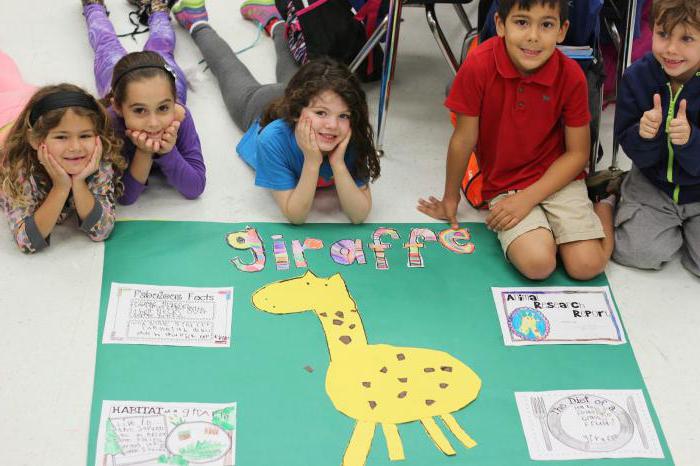
Development of cognitive activity as a topic for self-education of kindergarten teachers
The teacher’s self-education work consists of two stages:
- Theoretical stage of self-education. First of all, it is necessary to study regulatory documents and scientific and methodological literature, which talk about the importance and methods of organizing the cognitive and research activities of preschoolers (Federal State Educational Standard and the educational programs developed within its framework). It is also important to study the practical experience of colleagues on the topic of interest: pedagogical journals and information portals on preschool pedagogy widely present materials on organizing experimental activities for children (carrying out projects in preschool settings, notes on individual classes and research-oriented outings). The theoretical stage also includes the development of thematic planning: setting general goals and objectives of the proposed course of study with a table of specific activities for each age group of students.
- The practical stage is the implementation of the prepared base into practice. The teacher organizes classes on research activities in accordance with the curriculum in the first half of the day or opens a circle for additional education. During the school year, the teacher holds thematic meetings or consultations for parents, in which he introduces them to the tasks of the experimental activity and shows the results achieved by the children. The teacher should strive to involve preschoolers in project activities and participation in city and regional competitions. The teacher reports on the effectiveness of his work at teacher councils, seminars and thematic round tables.
In the process of research work, children’s natural need for experimentation and curiosity is satisfied. Carrying out observations and participating in experiments brings joy and delight to the little researcher. At the same time, during these classes an important information base is laid about the properties of objects and substances and the thinking abilities necessary for success in the future are developed.
